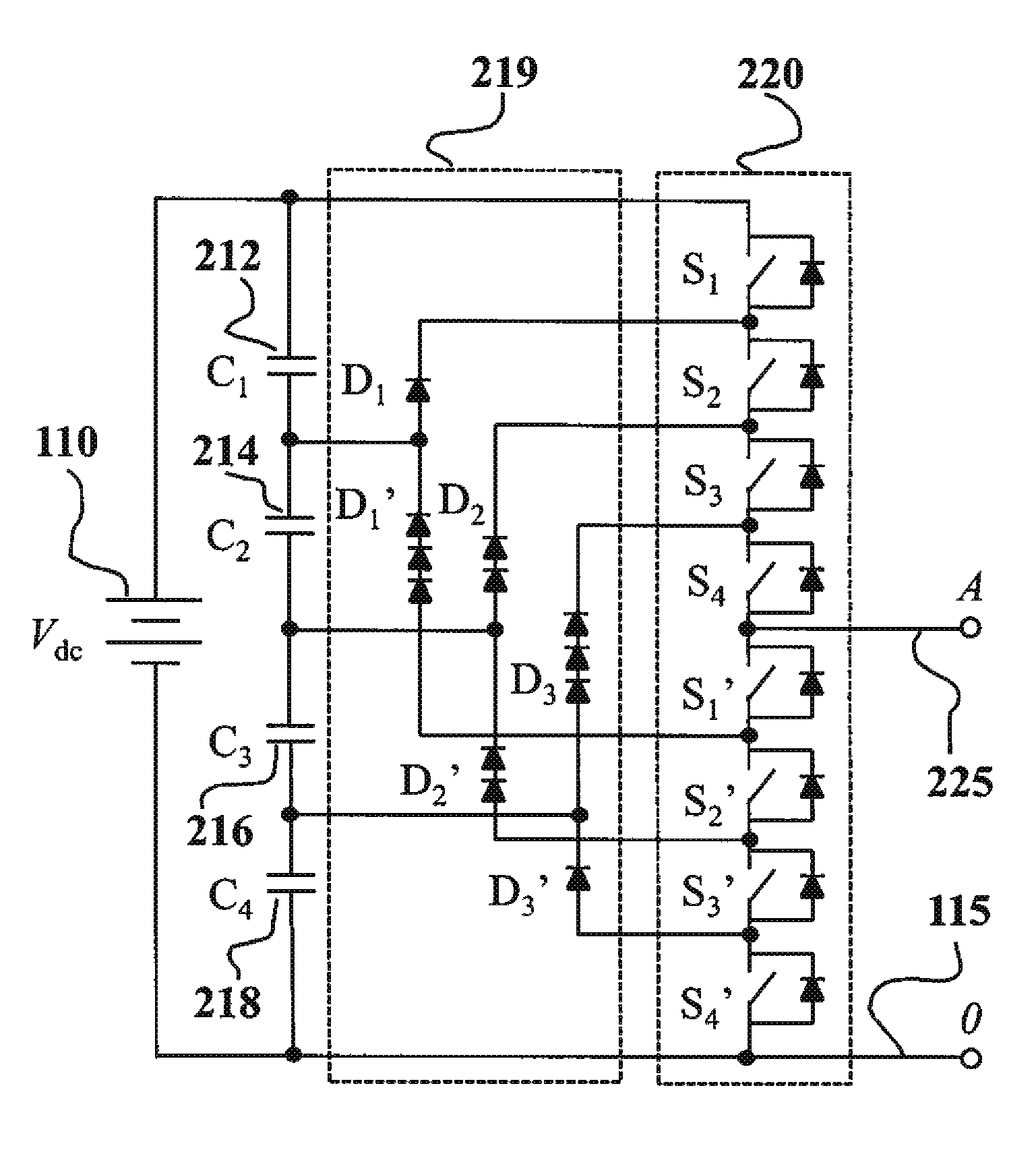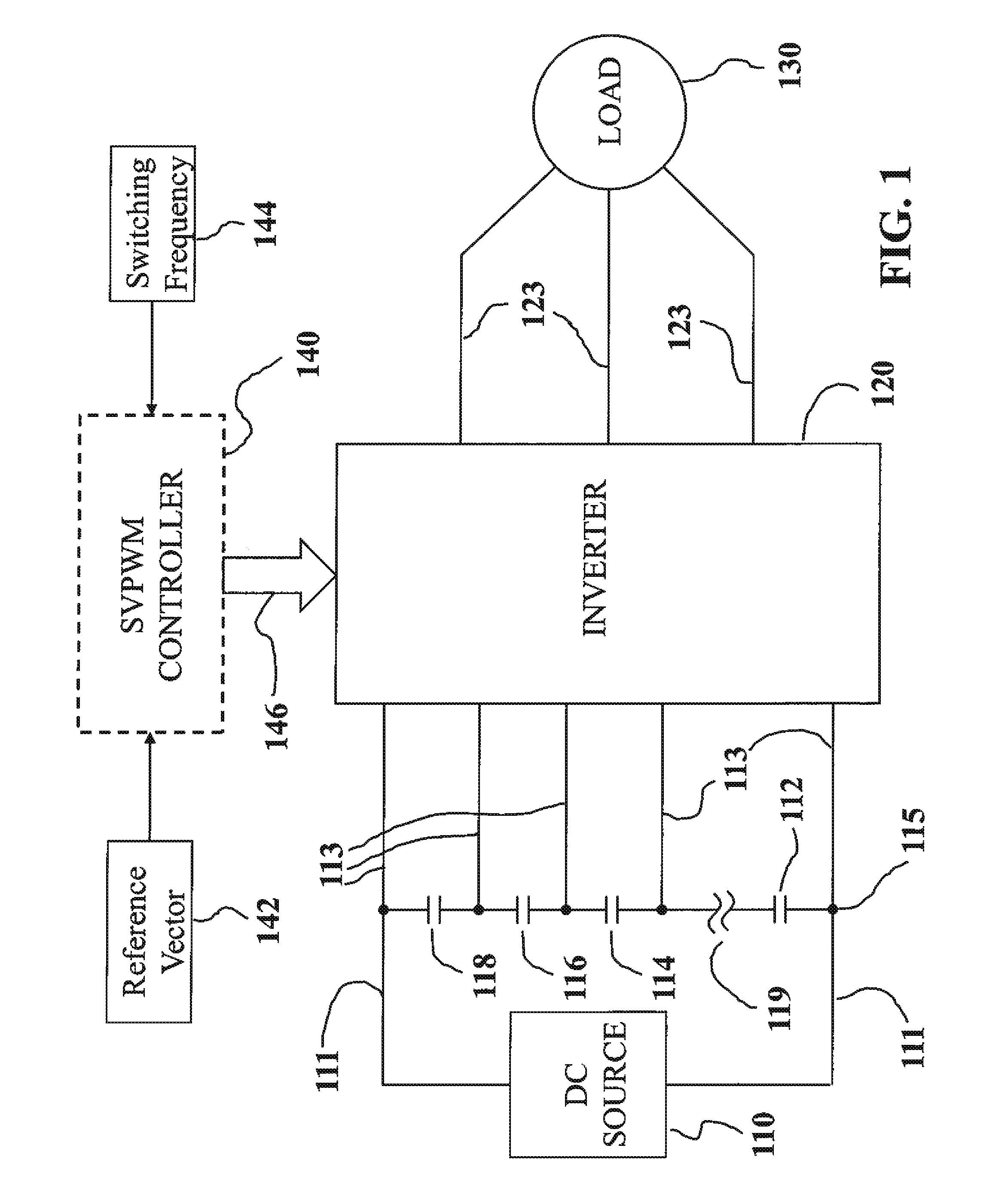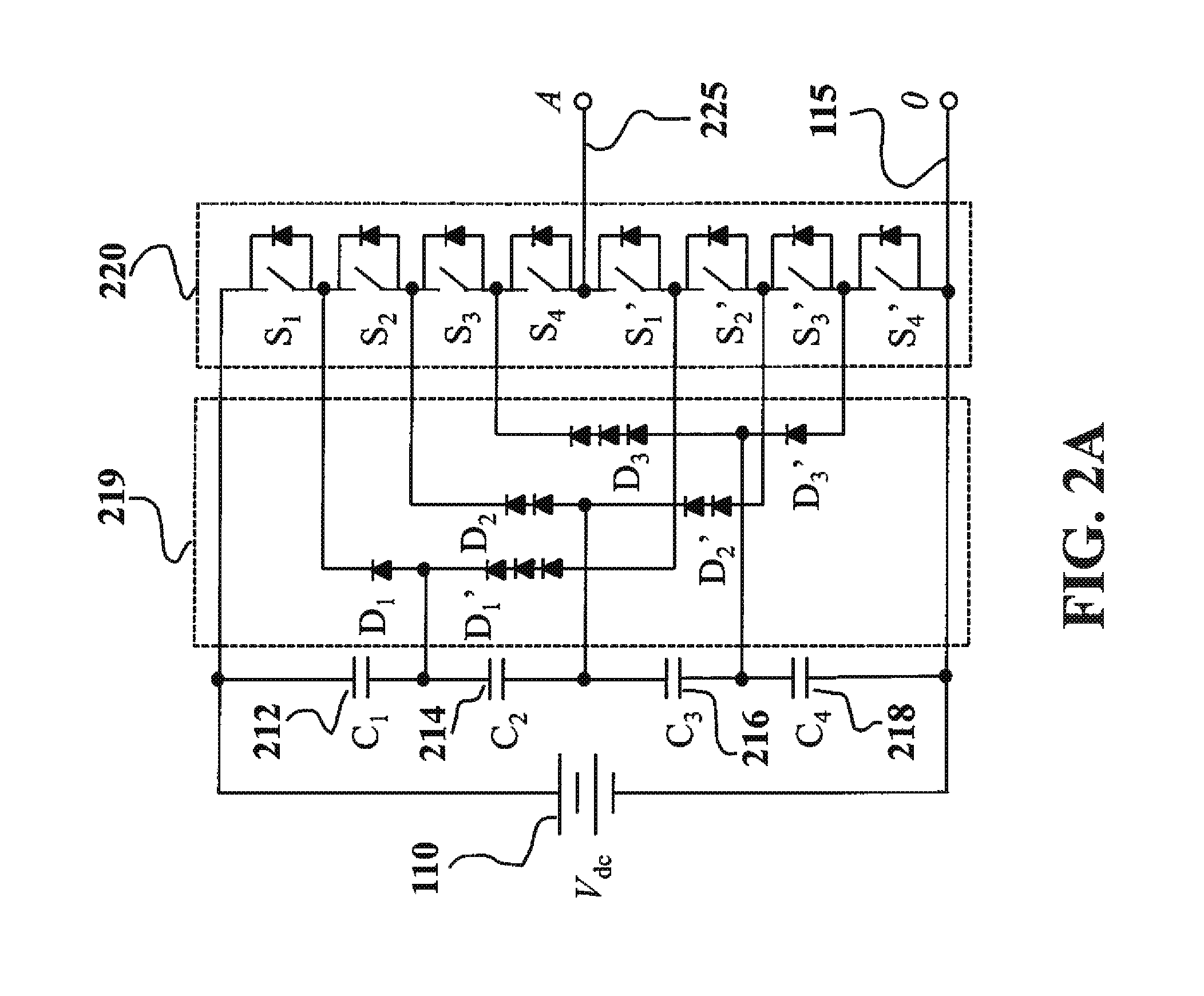Space Vector Modulation for Multilevel Inverters
a space vector and multi-level technology, applied in the field of electric power conversion systems, can solve the problems of reducing the flexibility of the svpwm method
- Summary
- Abstract
- Description
- Claims
- Application Information
AI Technical Summary
Benefits of technology
Problems solved by technology
Method used
Image
Examples
Embodiment Construction
[0047]Multilevel inverters are used in high-power medium-voltage applications due to their superior performance compared to two-level inverters. Space vector pulse width modulation (SVPWM) is preferred for various modulation strategies for multilevel inverters because SVPWM offers significant flexibility to optimize switching waveforms, and because SVPWM is well suitable for digital signal processor implementation. In order to reduce the harmonics and voltage surges during the switching transients, the “Nearest Three Vectors” (NTV), is commonly adopted for SVPWM.
[0048]For an n-level inverter, however, there are n3 switching states and 6(n−1)2 triangles in the space vector diagram. The complexity of conventional SVPWM for multilevel inverters is due to the difficulty in determining the location of the reference vector, the calculation of duty cycles, and the determination and selection of switching states. As the level of the inverter increases, the increased number of switching stat...
PUM
 Login to View More
Login to View More Abstract
Description
Claims
Application Information
 Login to View More
Login to View More - R&D
- Intellectual Property
- Life Sciences
- Materials
- Tech Scout
- Unparalleled Data Quality
- Higher Quality Content
- 60% Fewer Hallucinations
Browse by: Latest US Patents, China's latest patents, Technical Efficacy Thesaurus, Application Domain, Technology Topic, Popular Technical Reports.
© 2025 PatSnap. All rights reserved.Legal|Privacy policy|Modern Slavery Act Transparency Statement|Sitemap|About US| Contact US: help@patsnap.com



